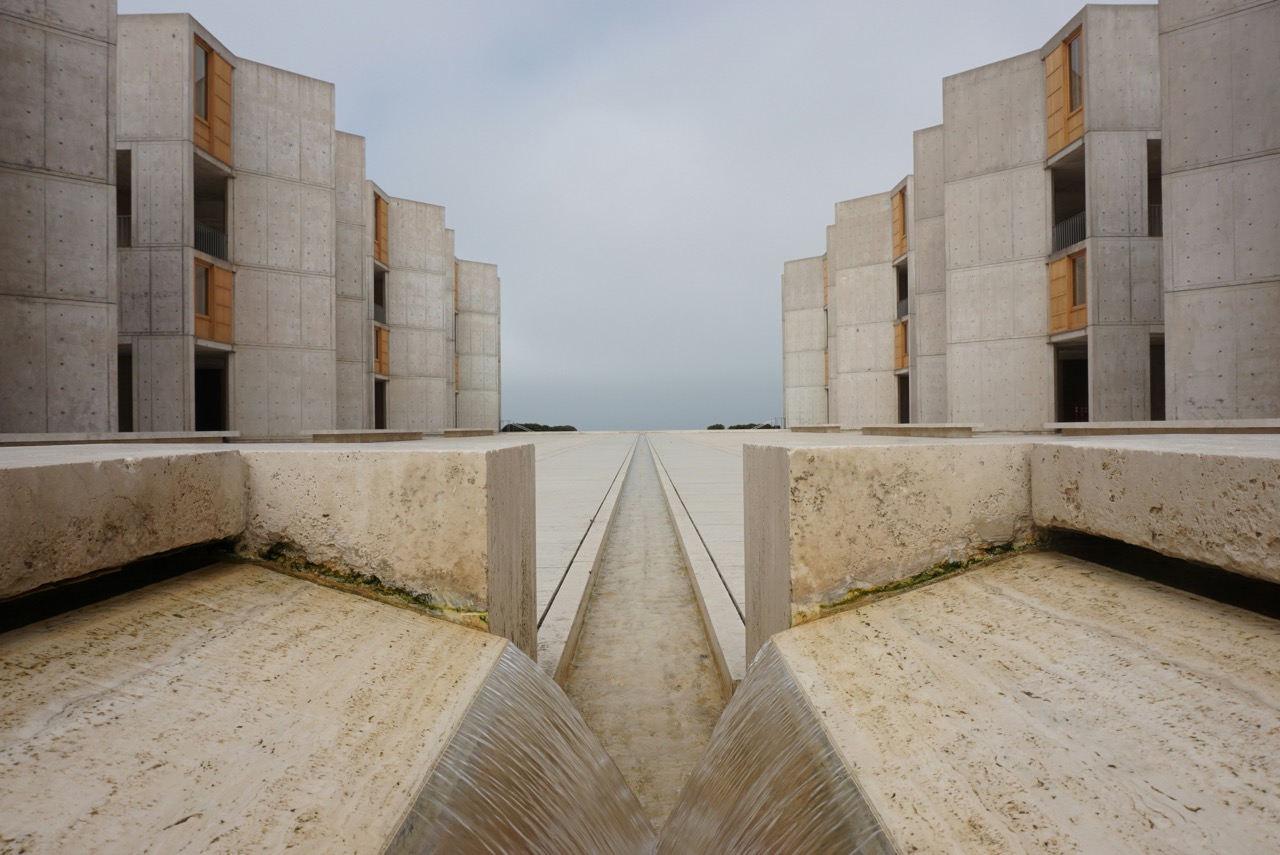The Salk Institute in San Diego, designed by Louis Kahn, stands as a prime example of an ideal biotechnology research institute. Kahn’s architecture is renowned for harmoniously blending function and form, light and space, while conveying philosophical messages through the architecture itself. The Salk Institute, one of his masterpieces, is acclaimed as a remarkable fusion of science and architecture.
The Salk Institute, embodying Kahn’s architectural beliefs, is founded on the philosophy that physical space can promote researchers’ creativity and collaboration. Its most impressive space, the central courtyard opening toward the Pacific Ocean with its intersecting water channel, visually expresses the institute’s philosophical meaning through water, symbolizing the source of life. The central plaza connects to the vast horizon of the Pacific, providing researchers with infinite possibilities and inspiration. This open and meditative space serves as a crucial design element that helps expand researchers’ creative thinking.
The interior of the Salk Institute features an open laboratory structure. This design allows flexible reconfiguration to accommodate changing research environments, reflecting the rapidly evolving nature of biotechnology research. The open laboratories naturally encourage collaboration among researchers and enable the multidisciplinary approach essential for scientific advancement. Each laboratory is designed with windows and spaces carefully considered to maximize natural light entry. This allows researchers to work efficiently during the day without relying on artificial lighting, representing an ideal fusion of Kahn’s architectural characteristic of space composition through light with scientific experimental environments.
Philosophical meaning is also evident in the choice of materials. The exposed concrete and teak wood of the Salk Institute symbolically demonstrate how life science is closely connected to nature. Particularly, the teak wood adds to the building’s beauty through natural weathering over time, reflecting sustainability. This choice of materials architecturally expresses the important values of biotechnology research: coexistence with nature and sustainability.
In this place where modern biotechnology innovations continue endlessly, Kahn’s architecture exists as a symbolic space where science and art converge, beyond mere physical environment. The Salk Institute demonstrates how architecture can serve as both a tool for scientific advancement and a source of inspiration.








